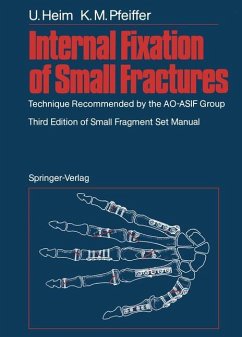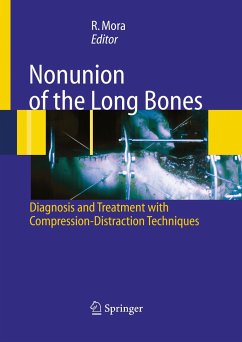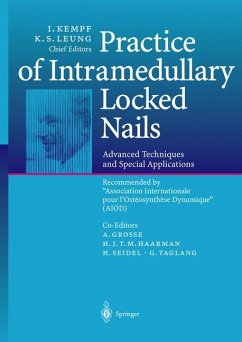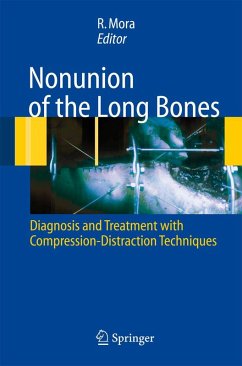
Internal fixation of femoral neck fractures
An Atlas
Herausgegeben: Manninger, Jenó; Bosch, Ulrich; Cserháti, Peter; Fekete, Károly; Kazár, György
Versandkostenfrei!
Versandfertig in 6-10 Tagen
106,99 €
inkl. MwSt.

PAYBACK Punkte
53 °P sammeln!
Femoral neck fractures occur primarily in the elderly population, and nowadays arthroplasty is chosen most frequently as a treatment solution. In the era of financial restrictions in health care system non-invasive internal fixation is an attractive choice, because in addition to the lower immediate costs the rehabilitation period might also be shorter. In this illustrated atlas the authors deal with epidemiological aspects, anatomical and biomechanical specialities of the given region, diagnostic and management potentials, satisfactory both for orthopaedic and trauma specialists. By means of ...
Femoral neck fractures occur primarily in the elderly population, and nowadays arthroplasty is chosen most frequently as a treatment solution. In the era of financial restrictions in health care system non-invasive internal fixation is an attractive choice, because in addition to the lower immediate costs the rehabilitation period might also be shorter. In this illustrated atlas the authors deal with epidemiological aspects, anatomical and biomechanical specialities of the given region, diagnostic and management potentials, satisfactory both for orthopaedic and trauma specialists. By means of presenting minimally invasive technique step-by-step, and their own results, the aim is to persuade the reader that the ratio of complications remarkably can be diminished by urgent surgery, based on selective indication criteria. Aspects of postoperative treatment and rehabilitation are also clarified in details. The research team under the guidance of Professor Manninger collected experiences of 50 years.












